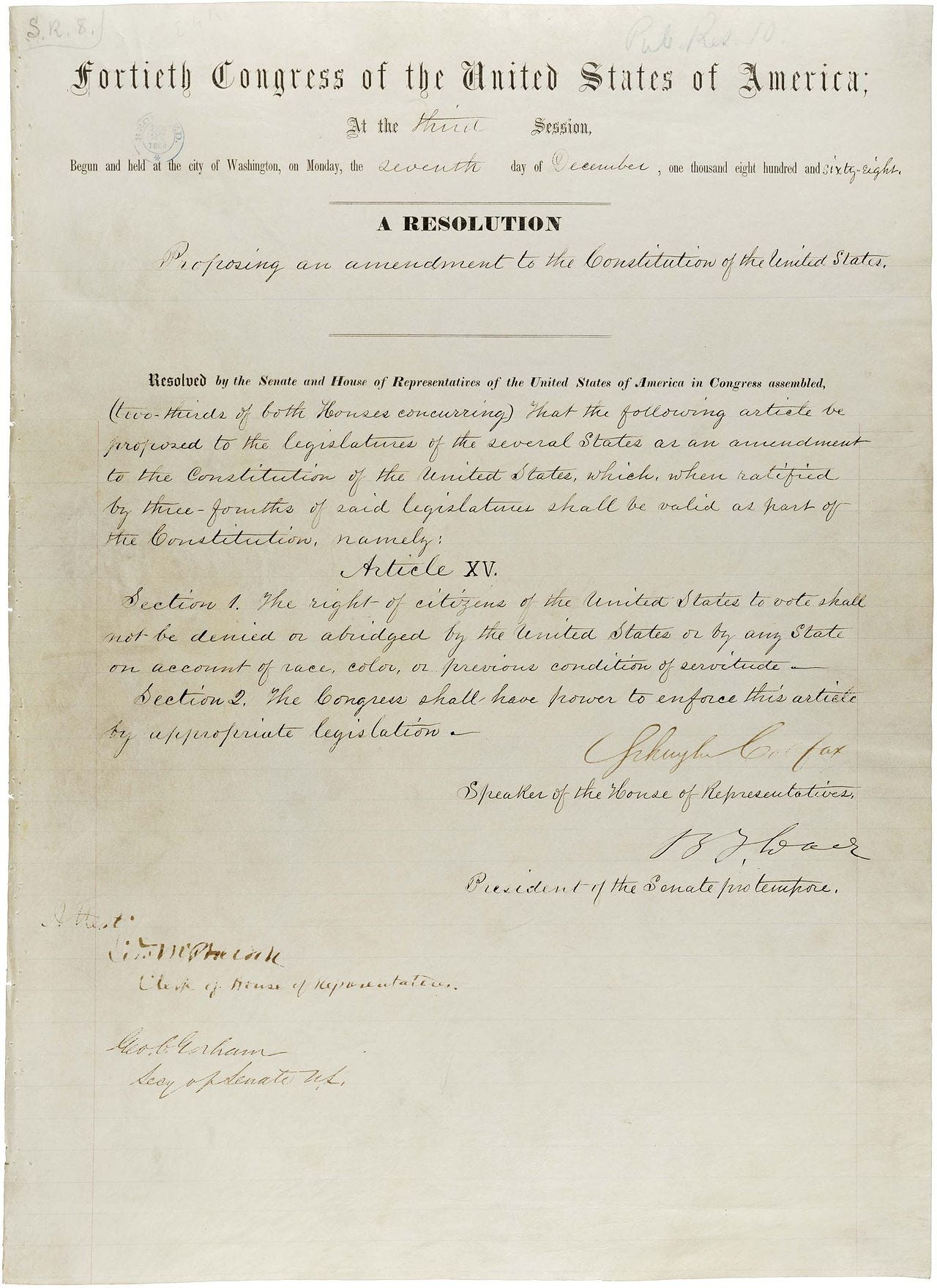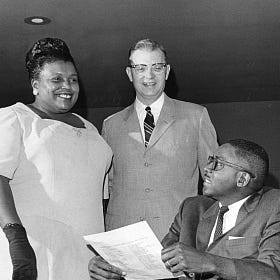How Voting Rights Have Changed
The right to vote, also called suffrage, has not always been a basic right for all people in the United States.
When the country was founded, voting was seen as a privilege, not a right. It was a power held by a small, select group of people, and over time, it has slowly grown to include more and more Americans.
The early United States was a time of great change. After winning the Revolutionary War, the new country had to decide what its government would look like.
The people who wrote the Constitution (the supreme law of the U.S.) were trying to create a government that was a big step away from the monarchy they had just left behind in Great Britain.
At the same time, they were still dealing with the deeply rooted beliefs held by people in the 18th century, which meant that many people were not considered full citizens.

When the U.S. was first founded, voting rights were decided by the individual states, not the federal (national) government. This meant the rules were different depending on where you lived. However, there were some common requirements across most states.
Land Ownership: Most states required a man to own a certain amount of property to be able to vote. The idea, at the time, was that only people who had a financial stake in the community would make responsible decisions about its future. This meant that poor men were often left out.
Race: Almost all of the states limited voting to white men. Free Black Men were almost entirely excluded (not allowed to vote), though a few states like New Jersey and Massachusetts had brief periods where they could vote before those rights were taken away.
Gender: Voting was strictly for men. Women, regardless of their wealth or race, were not allowed to vote. The belief at the time was that a woman's place was in the home and that her husband or father would choose her needs and opinions.
Religion: Some states also had religious tests, meaning only people of a certain faith could vote. For example, some states only allowed Protestants to vote. These religious restrictions were slowly removed over time.
In the early 1800s, a major movement began to expand suffrage for white men. Known as Jacksonian Democracy, this era saw many states get rid of the property ownership rule.
This change came about as more people moved west and settled on new land. These new settlers didn't own property in the traditional sense, and a growing belief was that any man should have a say in his government. This belief, unfortunately, did not extend to the Native and Indigenous populations that had already laid claim to those “new lands” for generations before white settlers moved in.
By the mid-1800s, almost all white men could vote, regardless of whether they owned land or not. This was a significant step, but it still left out a huge portion of the population.
After the Civil War, three important changes, known as the Reconstruction Amendments, were made to the Constitution.
The 13th Amendment abolished slavery, the 14th Amendment granted citizenship to all people born or naturalized in the U.S. (including formerly enslaved people), and the 15th Amendment addressed voting.
The 15th Amendment, passed in 1870, stated that the right to vote could not be denied or limited by the U.S. or any state based on “race, color, or previous condition of servitude.”
This amendment was a huge victory and meant that, in theory, Black men could now vote.
However, the fight was far from over. Southern states, where a majority of Black Americans lived, created many ways to prevent Black men from actually voting. These methods were sneaky and difficult to fight legally.
The 15th Amendment: Securing the Right to Vote
The right to vote is one of the most important freedoms in a democracy (government where people choose their leaders). However, for much of U.S. history, this right has been denied to many people.
These obstacles, often called disenfranchisement (taking away someone's right to vote), were incredibly effective. Even though the 15th Amendment was in place, the number of Black voters in the South dropped dramatically for nearly a century.
While the 15th Amendment was being debated, a powerful movement for women's voting rights was also growing. The women’s suffrage movement began to organize and protest, holding parades, picketing, and giving speeches. They were met with strong opposition (pushback).
Many people believed that women were too emotional or not smart enough to make important political decisions. They also believed that giving women the right to vote would destroy the traditional family structure, and give women too much freedom.
The movement continued to grow, and its leaders pushed for a constitutional amendment (a change or update to the Constitution). In 1920, after decades of hard work, the 19th Amendment was ratified. It said that the right to vote could not be denied or limited by the U.S. or any state based on sex. This was a huge victory and added millions of new voters to the American population.
It is important to note that even after the 19th Amendment, many women of color, especially Black women in the South, were still prevented from voting by the same racist laws and intimidation tactics that kept Black men from the polls.
The 19th Amendment: When Women Took Voting Back
For much of American history, women were not allowed to vote.
The long, difficult fight for voting rights continued through the mid-20th century.
During the Civil Rights Movement of the 1950s and 60s, a major focus was on fighting for voting rights for Black Americans. The courage and activism of people like Martin Luther King Jr., Rosa Parks, and John Lewis, as well as many ordinary citizens, brought national attention to the injustices of voter suppression in the South.
This activism led to the passage of the Voting Rights Act of 1965. This law was a landmark achievement.
It outlawed the literacy tests and poll taxes that had been used to stop Black people from voting. It also gave the federal government the power to oversee elections in places with a history of discrimination.
The Voting Rights Act made a huge difference, and millions of Black Americans were finally able to register and cast their ballots.
The 24th Amendment: Evelyn Butts, Ending the Poll Tax and Protecting the Right to Vote
In the United States, voting is one of the most important rights of citizenship. It allows people to choose their leaders and have a say in how their government works.
The history of voting in the U.S. is not a simple story of progress. It is a story of struggle, where people fought for their rights against powerful forces.
The expansion of suffrage from a privilege for a few to a right for many has been a defining part of the American journey.
Additional Reading and Sources
Voting Rights Act of 1965, National Archives
A History of Voting Rights in America, The U.S. Elections Assistance Commission
The Fifteenth Amendment, National Constitution Center
The 19th Amendment, National Archives
The History of the Vote, Smithsonian Institution
The Right to Vote, Library of Congress





